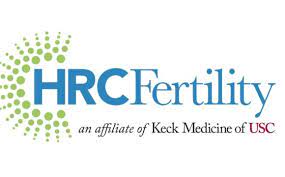by Michael Feinman, MD, FACOG
The overall aim of PGT (Pre-implantation genetic diagnosis) is to identify abnormalities in embryos, increase the chances of successful implantation, and reduce the risk of chromosomal abnormalities.
What is PGT?
But first, let’s look at exactly what PGT is. PGT involves the removal of a few cells from day 5 embryos (a.k.a. blastocysts). During this stage of development, the embryo is more resilient and can better withstand the biopsy procedure. The cells are removed from the embryo’s outer layer. The inner cell mass, which gives rise to the fetus, remains intact. The removed cells are then analyzed for genetic testing while the embryo is cryopreserved or cultured for future transfer.
While every effort is made to minimize damage, it is important to acknowledge that there is minimal risk associated with the biopsy procedure. However, the overall impact on embryo viability and subsequent development is negligible at our clinic and in various published studies.
Types of PGT testing
PGT (Preimplantation Genetic Testing) is an umbrella term that encompasses various genetic testing techniques performed on embryos during IVF. It includes:
PGT-A (Preimplantation Genetic Testing for Aneuploidy), formerly known as PGS (Preimplantation Genetic Screening)
PGT-A is used to identify the number of chromosomes present. Normal embryos contain 46 chromosomes. Interestingly, PGT-A is an unfortunate misnomer as it checks the number of chromosomes, not for genetic diseases.
Aneuploid Embryos: PGT-A can detect embryos with abnormal chromosomal numbers (referred to as aneuploid embryos). Aneuploidy can involve missing or extra chromosomes, such as trisomy (three copies of a specific chromosome) or monosomy (only one copy of a specific chromosome). Aneuploid embryos are more likely to result in failed implantation, miscarriage, or the birth of a child with chromosomal disorders (e.g., Down syndrome, Edwards syndrome, or Patau syndrome).
Mosaic Embryos: PGT-A may reveal mosaic embryos, which have a mixture of both normal and abnormal cells. Mosaicism occurs when some cells in an embryo have normal chromosomal composition while others have abnormal chromosomal content. There is an ongoing debate as to whether mosaic embryos are misdiagnosed results or should be discarded.
No Results: Occasionally, PGT-A may yield inconclusive or no results due to technical limitations or embryo-specific factors. This can happen when insufficient genetic material is available for analysis, leading to a result called “no-call.” In such cases, further testing or additional embryo biopsy may be required.
PGT-M (Preimplantation Genetic Testing for Monogenic Disorders):
PGT-M is performed when prospective parents have a known genetic disorder or are carriers of a specific genetic mutation. This testing allows for the identification of embryos that are unaffected by the specific genetic condition or mutation, such as:
Cystic Fibrosis
Sickle Cell Anemia
Tay-Sachs disease
Huntington’s disease
Muscular Dystrophy
Fragile X syndrome.
In some cases, PGT-M can be used when a specific genetic disorder is linked to a particular gender. For instance, some X-linked genetic disorders predominantly affect males. PGT-M can identify embryos of the desired gender without genetic mutation, reducing the risk of passing on the disorder to affected children.
PGT-SR (Preimplantation Genetic Testing for Structural Rearrangements):
PGT-SR is employed when one or both parents have chromosomal rearrangements, such as balanced translocations or inversions. A balanced translocation occurs when a segment of one chromosome breaks off and attaches to another chromosome without any genetic material loss. Although individuals with balanced translocations typically have a normal phenotype, they are at an increased risk of producing unbalanced gametes, leading to chromosomal imbalances in their offspring.
Unbalanced translocations occur when the chromosomal rearrangement leads to a loss or gain of genetic material, potentially resulting in developmental abnormalities, intellectual disabilities, or other health issues.
PGT-SR can also detect inversions. This is when a segment of a chromosome is reversed in orientation. Inversions generally do not result in significant health issues, particularly if no genetic material is lost or duplicated.
PGT-SR may be a good diagnostic tool for couples with a history of recurrent miscarriages or chromosomal abnormalities.
Why choose PGT?
The choice of which type of PGT testing to select depends on the individual circumstances, the specific genetic or medical conditions involved, and local regulations and guidelines.
The advantages of PGT are:
- PGT can provide psychological relief by eliminating the uncertainty associated with the risk of passing on a known genetic disorder or disease to their child. Knowing their embryos have been screened can alleviate anxiety and provide reassurance during the reproductive process.
- Advanced maternal age is associated with an increased risk of chromosomal abnormalities; therefore, testing is often recommended.
- When PGT identifies embryos with genetic abnormalities, prospective parents can choose not to transfer those embryos, thereby avoiding the difficult decision of voluntary termination if the abnormalities were detected during pregnancy.
- For women over 35 years, PGT may improve pregnancy success rates during IVF by selecting genetically normal embryos for transfer. This helps to reduce the emotional and financial burden associated with failed implantations or miscarriages, giving couples a higher likelihood of achieving a successful pregnancy. (For women under the age of 35 years, see the write-up on egg donors and PGT testing below).
The disadvantages of PGT are:
- PGT is an additional procedure in the IVF process and comes with a significant financial cost. The expenses associated with genetic testing, laboratory procedures, and embryo freezing can be prohibitive for some couples, making PGT inaccessible or financially burdensome.
- While PGT offers valuable genetic information, it is not infallible. False positive or negative results can occur, leading to potential misdiagnoses, which could result in the abandonment of good-quality embryos or inadvertent transfer of abnormal embryos.
- Although aneuploidy (abnormal chromosomal numbers) is a primary cause of miscarriages, it remains scientifically unproven that PGT effectively reduces the miscarriage rate. This observation presents an intriguing aspect that requires further examination.
- PGT raises ethical concerns about selecting and discarding embryos based on genetic characteristics. This can lead to debates about what constitutes a “desirable” or “undesirable” trait, potentially reinforcing eugenics-like tendencies or creating societal divisions based on genetic makeup.
- Despite advancements, there are limitations to the range of conditions that can be screened for. Technology is continually evolving, but it may not capture certain genetic disorders or complex traits, leaving room for uncertainty and the possibility of undetected conditions.
Is it necessary to perform PGT testing on young egg donor embryos?
From the outset, the group that was not initially targeted for Preimplantation Genetic Testing (PGT) was egg donors. This decision was based on the low risk of Down syndrome and other genetic abnormalities in this age group. Interestingly, in our clinic, a significant portion of PGT performed on donors is carried out upon patient request. As a result, we have gained valuable insights:
- Surprisingly, donors consistently produce approximately 30% abnormal embryos on average. While this may appear high, it aligns with findings in the existing literature and our own experiences.
- Despite the high prevalence of abnormalities and the deliberate selection of genetically normal embryos for transfer, it is surprising to note that there is no observed improvement in pregnancy rates when comparing tested and untested embryos within this group. Intuitively, one would expect that excluding abnormal embryos should lead to higher pregnancy rates.
There are two benefits to PGT in egg donors and young patients. Since these patients tend to make many eggs and embryos, PGT helps narrow the choices for embryo transfer and reduces the number of apparently viable embryos to deal with when the family is complete. A side benefit of PGT is knowing the gender of the embryos if patients are interested.
The insights gleaned from our clinic’s experience challenge certain assumptions and raise intriguing questions about PGT utilization in egg donor scenarios. Further research and investigation are necessary to fully understand the underlying factors influencing pregnancy rates and miscarriage rates in these situations.
In the past, it was common practice to transfer more than one embryo to improve pregnancy rates because we did not know which one to pick. The experience with PGT in egg donors has shown that there is no benefit to transferring two embryos, and it is now standard practice in the field to implant one PGT-tested embryo at a time.
It has been difficult to demonstrate a medical benefit to PGT-A in donors and other young women. The procedure should be considered elective in these young women, and patients should not feel compelled to do it.
Our clinic discusses the specific risks, benefits, and success rates of PGT with each patient, considering their personalized information based on individual circumstances and the latest scientific advancements in the field.

About this Author:
Michael Feinman, MD, FACOG, is Board Certified physician at HRC Fertility. He graduated from UCLA School of Medicine in 1980. He completed his residency in Obstetrics and Gynecology at the Sloane Hospital for Women, Columbia-Presbyterian Hospital of New York, in 1984 and his REI fellowship at the University of Pennsylvania in 1986. Dr. Feinman went on to help establish the IVF program at the Albert Einstein College of Medicine in NY. His team performed the first vaginal ultrasound-guided egg retrieval in New York and created one of the world’s first successful egg donor programs.
He currently sees patients in his California offices in Encino and Westlake Village. Huntington Reproductive Center (HRC) has historically been at the forefront of technological advances. 1989 it established one of the first pre-implantation genetics testing programs for sex-linked gender disorders. In addition, they were one of the first clinics to offer micromanipulation for treating male factor infertility.
Dr. Feinman is active in well-known professional organizations, including the Association of Private Assisted Reproductive Technology, the American College of Obstetricians and Gynecologists, the American Society for Reproductive Medicine, and the Society of Reproductive Endocrinologists. He is frequently invited to speak at national and international conferences regarding family-building options. Dr. Feinman assists national and international patients. His areas of interest include third-party parenting, minimal stimulation, natural cycle IVF for poor prognosis patients, and strategies for minimizing multiple pregnancies.

Michael Feinman, MD, FACOG
Board Certified Reproductive Endocrinologist
Encino (818) 788-7288 Westlake Village (805) 374-1737
New Appointments (866) HRC-4IVF

